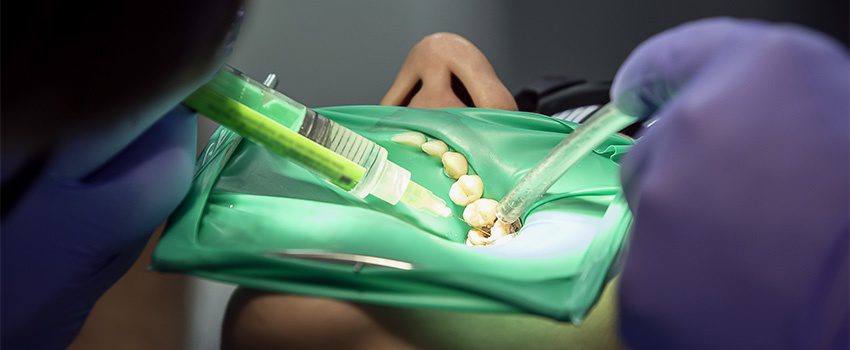Decades ago, root canals were known for being painful. Fortunately, advancements in medical technologies and local anesthetics make a patient’s experience very little to no pain, which means fewer people are avoiding them.
What Is a Root Canal?
A root canal refers to the tooth’s inner passages between the pulp and tooth roots. It is also a term used to define a dental procedure that involves removing infected material to relieve root canal pain.
The root canal contains nerves and blood vessels. These particular nerves are responsible for the hot and cold sensation. When an adult tooth has emerged from the gums, the tooth’s nerves no longer serve any other functions besides sensing cold, heat, and other stimuli.
For this reason, a root canal treatment is highly medically necessary when something is wrong. Removing the nerve in an infected tooth is also part of the standard procedure for treating pain due to decay, damage, or an infection in the pulp.
Why Do People Get Root Canals?
People often settle for root canal treatment to relieve the pain in their root canals. The common causes include decay, infection, and occasionally damage from other sources.
Damage: If you notice cracks and chips in a tooth, this will eventually cause root canal pain.
Decay: Tooth decay that has deeply penetrated the outer layers can also lead to the same result.
Infection: Infection happens when there is a detected growth of bacteria in a particular tooth. Bacteria may enter through a dental cavity or a chip and crack in a tooth, and this is able to spread all the way down to its root.
How Is the Root Canal Procedure Done?
The procedure starts with an appointment. Once you arrive for your appointment, a dental technician will welcome you and escort you to be situated in a dental chair. You will then be given a bib to place around your neck to prevent staining your clothes.
The following steps will be completed to ensure a successful procedure:
Step 1: Diagnosis and Applying Local Anesthetic
After getting settled in, a licensed dentist will start to examine your tooth. He may also request x-ray examinations to see through the different layers of your tooth and formulate a final diagnosis.
Upon getting a diagnosis that calls for a root canal treatment, you will be handled by an endodontist. An endodontist is a specialist who can perform the root canal.
The endodontist will start by administering an anesthetic medication that will leave your affected tooth feeling numb and painless. At first, you will notice a stinging feeling or a burning sensation. It will rapidly go away and gradually be replaced by virtually no sensation at all.
Step 2: Removing the Infected Pulp
Once the burning sensation turns into a feeling of numbness, the endodontist will use their tools to create a hole exposing the affected tooth. They will remove the infected pulp and nerve in your tooth’s root canal. This step is done while cleaning and shaping the inside of the passages to prevent further infection later.
Step 3: Temporary Filling
The endodontist will start filling and sealing the space of the cleaned root canal. A sealer called gutta-percha will be used in this case. The sealing process should be carefully done since this will prevent the tooth from saliva, food, or other irritants.
Some endodontists even apply topical antibiotics to prevent recurring infection in a particular tooth, while others stick to prescribing oral antibiotics.
What Are the Root Canal Risks?
Abscess formation and even tooth loss remain possibilities. You can lose your tooth if the enamel is too frail to withstand the procedure. On the other hand, an abscess can form when some infected material is left behind unknowingly. This problem allows the recurrence of infections and may lead to more irreversible complications.
Like any other procedure, there are increased risks associated with long-term or chronic conditions and gum disease. However, in most cases, the benefits always outweigh the risks.
To learn more about this dental procedure, visit us at Sunrise Dentistry. Our holistic dentist in Durango, CO will be more than happy to answer all your queries.





